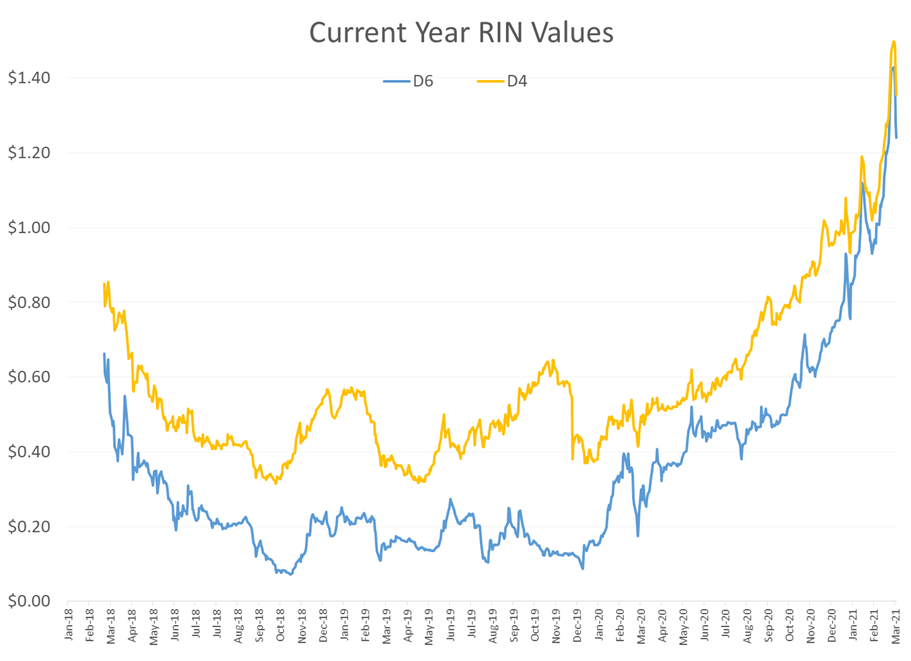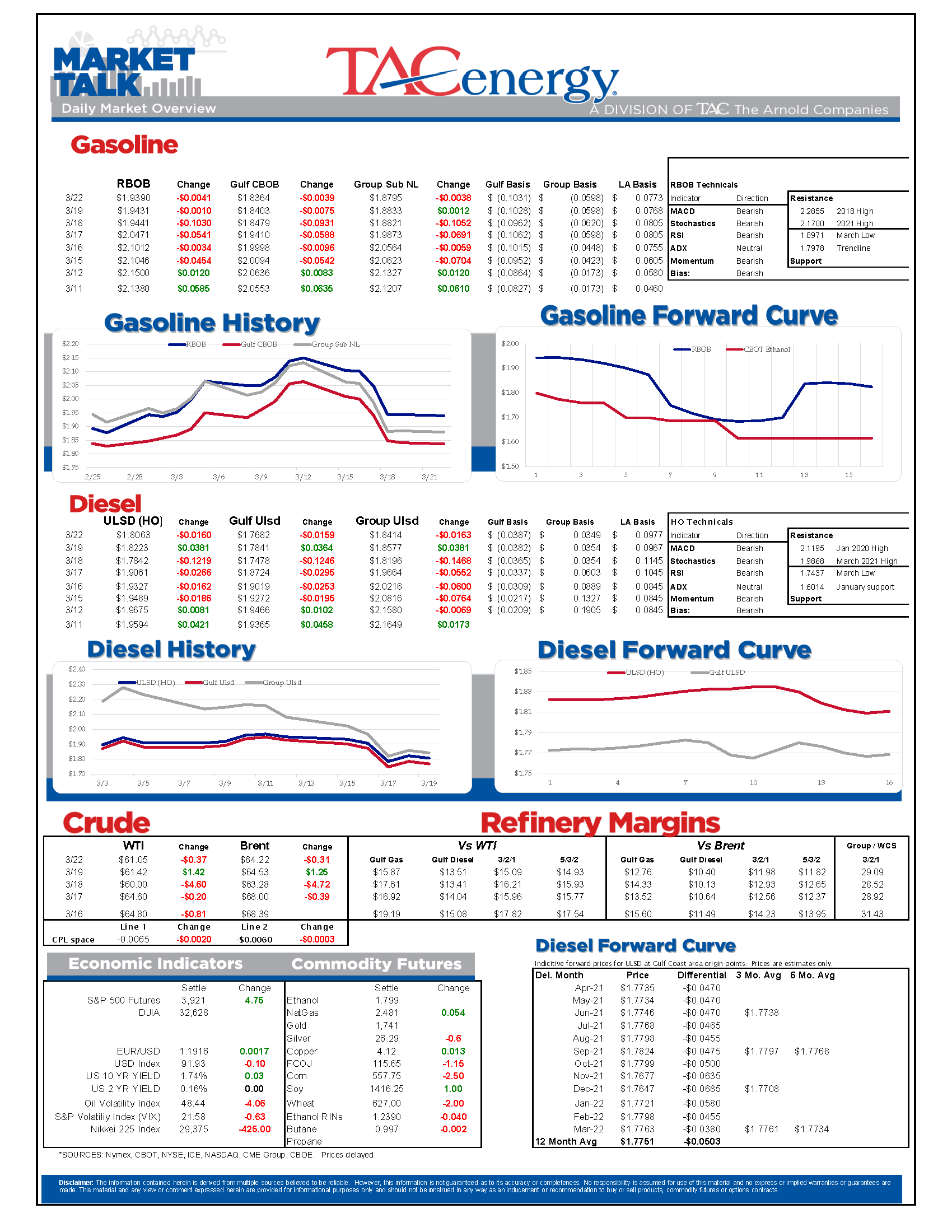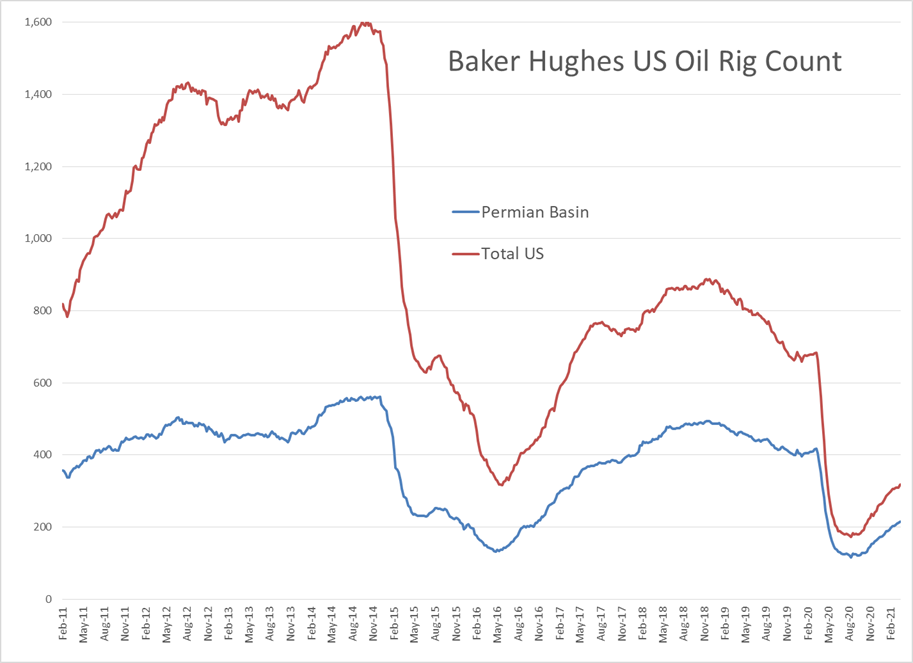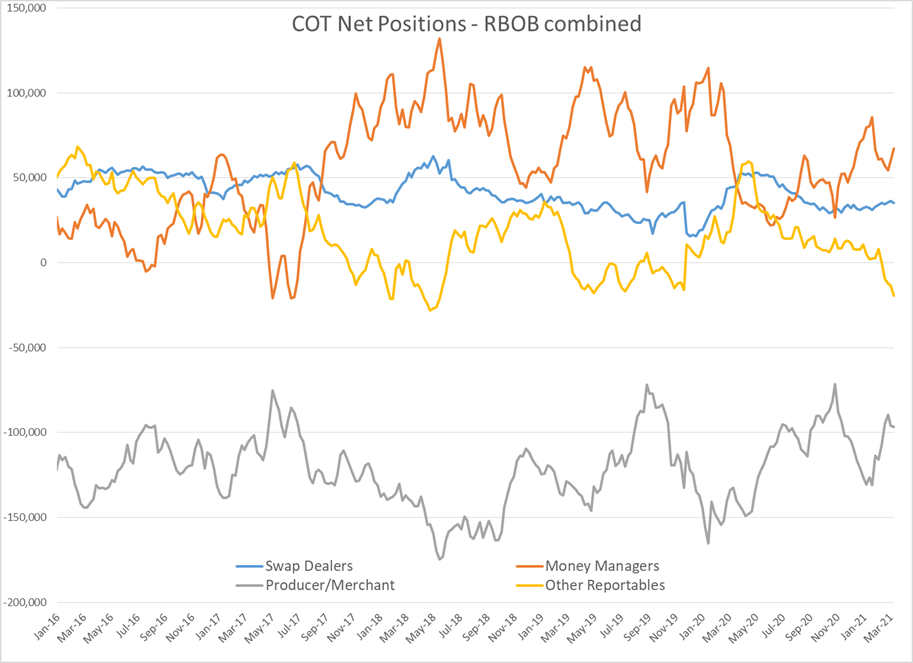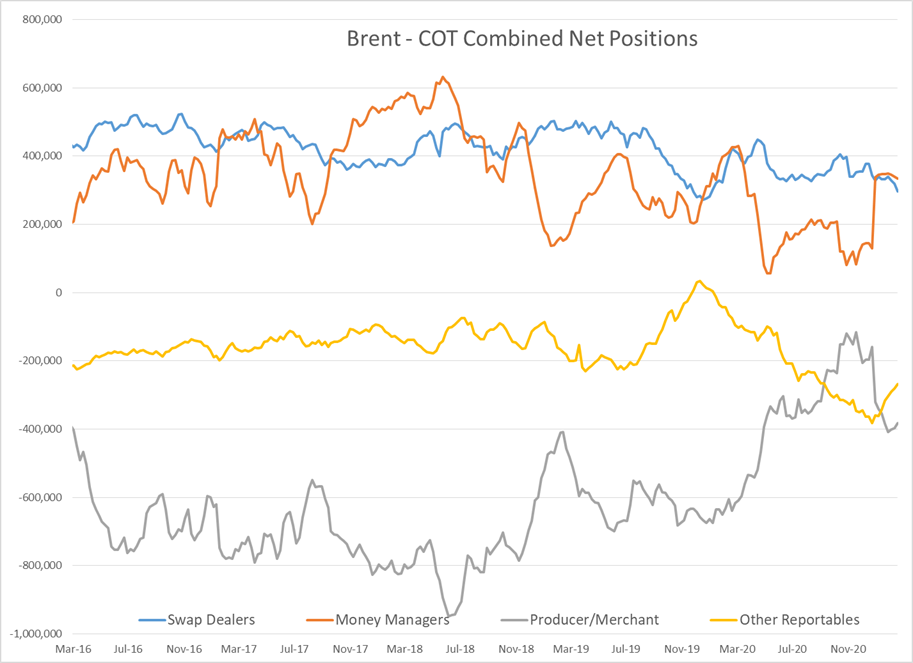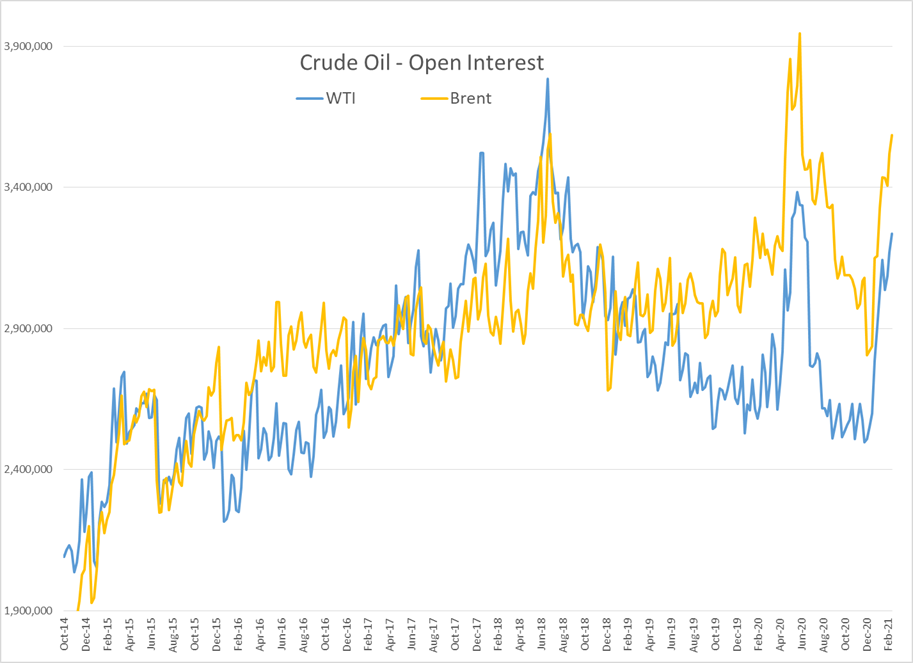Worst Week Of Selling In Nearly A Year

Energy prices are struggling to carve out a bottom after the worst week of selling in nearly a year finally broke the momentum of the 4.5 month old price rally.
Another drone attack on Saudi oil infrastructure failed to stir the markets much overnight as it appears the damage was limited again, and because the country is still sitting on excess capacity trying to keep prices propped up that acts as a buffer to any short term disruptions.
Every time it feels like the Polar Plunge-driven supply disruptions are being put in the rearview mirror a new report surfaces that shows the challenges are continuing. On Friday it was a report that Colonial was still struggling to move products along its system due to a lack of supply coming from Gulf Coast refiners to push the other barrels further along the line. That news suggests the supply tightness may be shifting east, and more allocations along the Atlantic coast can be expected this week.
Baker Hughes reported an increase of nine drilling rigs active in the U.S., with most coming from the Permian (5) and Eagle Ford (2) plays. It’s worth noting that New Mexico saw an increase of seven rigs last week, which may mean drillers are focusing on getting what they can from that state before the anticipated closure of Federal lands to new drilling activity.
The increase in activity across West Texas and New Mexico is exacerbating the challenge of resupplying the region with diesel after the rash of refinery closures, with rack prices in the area still holding near two year highs relative to USGC spot prices. That means shippers are facing an interesting tug of war between sending diesel east along Colonial or West to the drilling region, and could mean both areas stay tight for longer than if demand hadn’t started to increase just in time for supply to collapse.
Some large funds probably want a do-over after increasing their net length on WTI, RBOB, ULSD and Gasoil contracts – much of which was caused by short positions throwing in the towel and liquidating – just before prices had their biggest selloff in 11 months. The big speculators were doing better in Brent contracts that did see a reduction in net length (bets on higher prices) in last week’s report, which has positions compiled as of Tuesday.
Want to feel better about your job? Read this story of how disputes between commodity traders and shipping companies has left hundreds of thousands of mariners stranded at sea.
RIN prices continued to see heavy selling Friday, with both D4 and D6 prices down roughly 18 cents after approaching all-time highs to start the week, which has limited the benefit of rising crack spreads for refiners. There doesn’t seem to be news coming from Washington to drive the reversal, but the EPA did reboot its climate change website last week, and asked viewers to stay tuned until there’s actual content to view. Meanwhile, in the other Washington, a push to create an LCFS program similar to California’s has come under challenges from a “scientific” studies suggesting that bio and renewable diesel combustion do not lower pollution levels as advocates suggest.
Click here to download a PDF of today's TACenergy Market Talk.
Latest Posts
Gasoline Futures Are Leading The Way Lower This Morning
The Sell-Off Continues In Energy Markets, RBOB Gasoline Futures Are Now Down Nearly 13 Cents In The Past Two Days
Week 15 - US DOE Inventory Recap
Prices To Lease Space On Colonial’s Main Gasoline Line Continue To Rally This Week
Social Media
News & Views
View All
Gasoline Futures Are Leading The Way Lower This Morning
It was a volatile night for markets around the world as Israel reportedly launched a direct strike against Iran. Many global markets, from equities to currencies to commodities saw big swings as traders initially braced for the worst, then reversed course rapidly once Iran indicated that it was not planning to retaliate. Refined products spiked following the initial reports, with ULSD futures up 11 cents and RBOB up 7 at their highest, only to reverse to losses this morning. Equities saw similar moves in reverse overnight as a flight to safety trade soon gave way to a sigh of relief recovery.
Gasoline futures are leading the way lower this morning, adding to the argument that we may have seen the spring peak in prices a week ago, unless some actual disruption pops up in the coming weeks. The longer term up-trend is still intact and sets a near-term target to the downside roughly 9 cents below current values. ULSD meanwhile is just a nickel away from setting new lows for the year, which would open up a technical trap door for prices to slide another 30 cents as we move towards summer.
A Reuters report this morning suggests that the EPA is ready to announce another temporary waiver of smog-prevention rules that will allow E15 sales this summer as political winds continue to prove stronger than any legitimate environmental agenda. RIN prices had stabilized around 45 cents/RIN for D4 and D6 credits this week and are already trading a penny lower following this report.
Delek’s Big Spring refinery reported maintenance on an FCC unit that would require 3 days of work. That facility, along with several others across TX, have had numerous issues ever since the deep freeze events in 2021 and 2024 did widespread damage. Meanwhile, overnight storms across the Midwest caused at least one terminal to be knocked offline in the St. Louis area, but so far no refinery upsets have been reported.
Meanwhile, in Russia: Refiners are apparently installing anti-drone nets to protect their facilities since apparently their sling shots stopped working.
Click here to download a PDF of today's TACenergy Market Talk.

The Sell-Off Continues In Energy Markets, RBOB Gasoline Futures Are Now Down Nearly 13 Cents In The Past Two Days
The sell-off continues in energy markets. RBOB gasoline futures are now down nearly 13 cents in the past two days, and have fallen 16 cents from a week ago, leading to questions about whether or not we’ve seen the seasonal peak in gasoline prices. ULSD futures are also coming under heavy selling pressure, dropping 15 cents so far this week and are trading at their lowest level since January 3rd.
The drop on the weekly chart certainly takes away the upside momentum for gasoline that still favored a run at the $3 mark just a few days ago, but the longer term up-trend that helped propel a 90-cent increase since mid-December is still intact as long as prices stay above the $2.60 mark for the next week. If diesel prices break below $2.50 there’s a strong possibility that we see another 30 cent price drop in the next couple of weeks.
An unwind of long positions after Iran’s attack on Israel was swatted out of the sky without further escalation (so far anyway) and reports that Russia is resuming refinery runs, both seeming to be contributing factors to the sharp pullback in prices.
Along with the uncertainty about where the next attacks may or may not occur, and if they will have any meaningful impact on supply, come no shortage of rumors about potential SPR releases or how OPEC might respond to the crisis. The only thing that’s certain at this point, is that there’s much more spare capacity for both oil production and refining now than there was 2 years ago, which seems to be helping keep a lid on prices despite so much tension.
In addition, for those that remember the chaos in oil markets 50 years ago sparked by similar events in and around Israel, read this note from the NY Times on why things are different this time around.
The DOE’s weekly status report was largely ignored in the midst of the big sell-off Wednesday, with few noteworthy items in the report.
Diesel demand did see a strong recovery from last week’s throwaway figure that proves the vulnerability of the weekly estimates, particularly the week after a holiday, but that did nothing to slow the sell-off in ULSD futures.
Perhaps the biggest next of the week was that the agency made its seasonal changes to nameplate refining capacity as facilities emerged from their spring maintenance.
PADD 2 saw an increase of 36mb/day, and PADD 3 increased by 72mb/day, both of which set new records for regional capacity. PADD 5 meanwhile continued its slow-motion decline, losing another 30mb/day of capacity as California’s war of attrition against the industry continues. It’s worth noting that given the glacial pace of EIA reporting on the topic, we’re unlikely to see the impact of Rodeo’s conversion in the official numbers until next year.
Speaking of which, if you believe the PADD 5 diesel chart below that suggests the region is running out of the fuel, when in fact there’s an excess in most local markets, you haven’t been paying attention. Gasoline inventories on the West Coast however do appear consistent with reality as less refining output and a lack of resupply options both continue to create headaches for suppliers.

